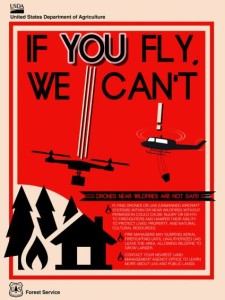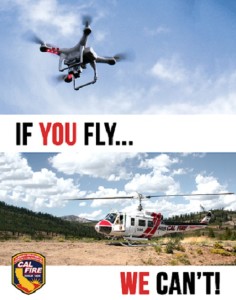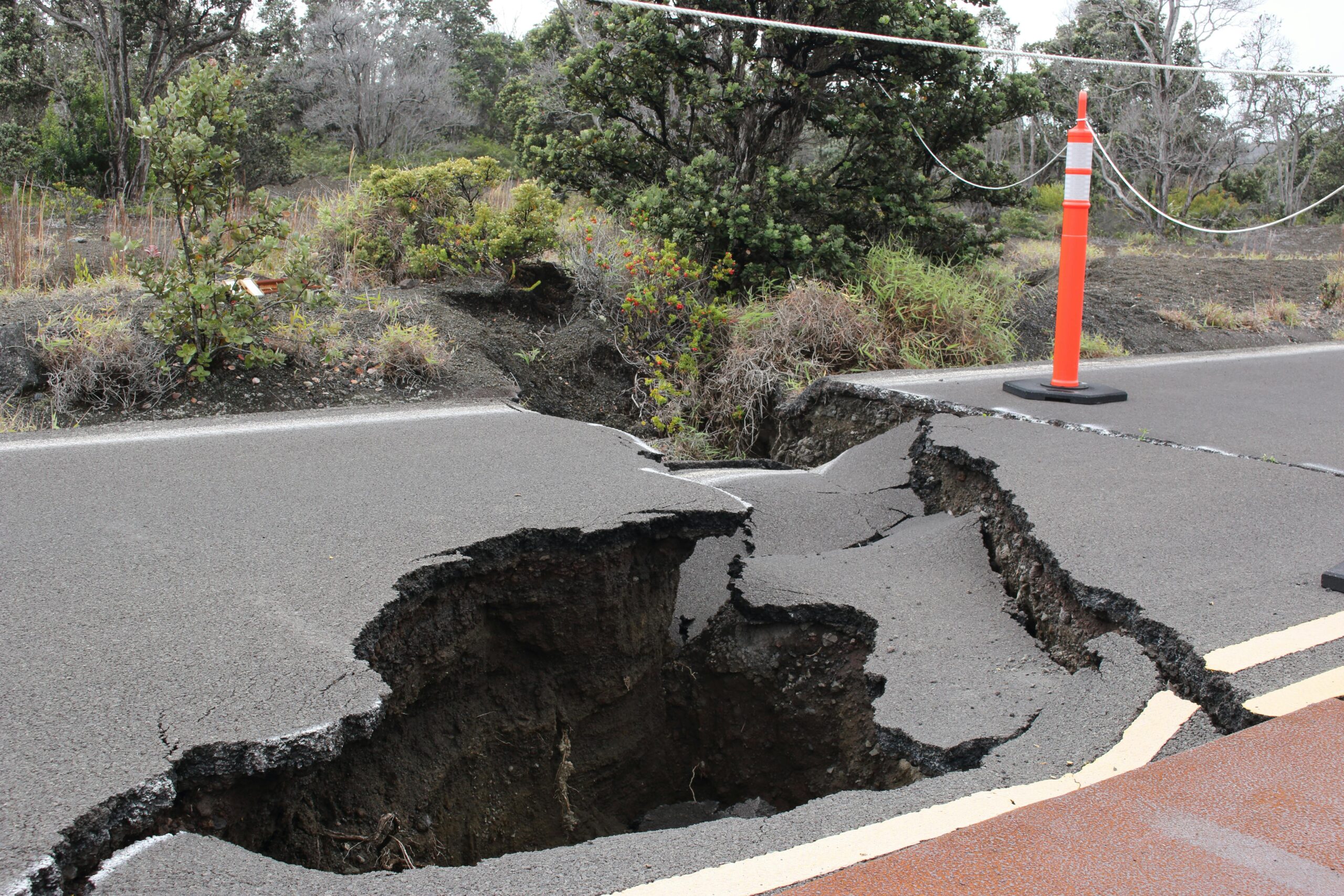Wildfire and Drones
Modern technology has improved the way we prevent, monitor, and fight wildland fires, but sometimes technology can provide new and obstructive burdens for firefighters. An example of this is the recent prevalence of hobbyist drones. The low cost, ease of operation, and myriad of cameras and sensors make these vehicles perfectly suited for aerial wildfire reconnaissance by hobbyists. However, the Federal Aviation Administration provides guidance for when and where these aircraft can be flown, and too often firefighters are seeing these aircraft being flown near wildfires that have been issued Temporary Flight Restrictions (TFRs). TFRs are implemented to restrict the flight of any aircraft not involved in the fire fighting effort. This helps ensure the safety of the aerial firefighters, their aircraft, and firefighters on the ground.


If You Fly, We Can’t
The United States Forest Service has implemented a campaign aimed at spreading awareness of these restrictions to the hobbyist communities. Titled “If You Fly, We Can’t”, the campaign explains how flying drones near wildfires grounds firefighting aircraft and can cause delays in the firefighting effort. Time is extremely important when fighting fires, so delaying water or fire retardant drops could greatly endanger the safety of the firefighters and their equipment, and risk the loss of homes or other structures. In 2015, the United States Forest Service reported 25 documented instances of drones flying near wildfires, temporarily shutting down aerial firefighting operations at least 10 times.
Steep Penalties
Recently, a Federal Aviation Administration (FAA) spokesman explained to The Wall Street Journal that drone operators that violate a TFR could face civil penalties of $27,500 and additional criminal prosecution. The FAA recently updated their rules for small drones, referred to as Unmanned Aircraft Systems by the FAA, to help clarify the regulations and responsibilities of drone operators.
[/av_textblock]



